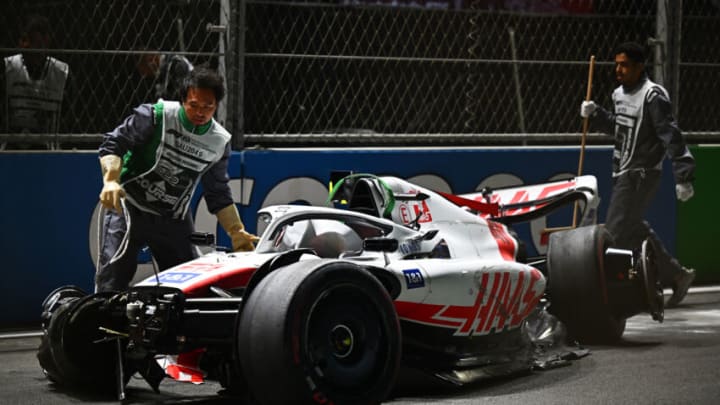Between a dangerous track layout and eyebrow-raising concerns regarding the host nation, what lays ahead for one of Formula 1’s most daring circuits?
Providing one of the most controversial and entertaining races in the history of Formula 1, the Jeddah Corniche Circuit in Saudi Arabia has immediately carved itself a place in the calendar as one of the most boldly designed layouts in Hermann Tilke’s arsenal, pairing the tight walls of Baku with the speeds of Silverstone and a natural tendency to manufacture theatrics.
In its short history, the Corniche has rapidly earned the reputation as one of Bernd Mayländer’s most lapped circuits of the year. Providing multiple standing restarts in the Formula 1 Grand Prix and a litany of safety cars throughout the Formula 2 weekend last year, Jeddah’s return in 2022 turned the tide.
Despite two safety cars and an unfortunate situation for Red Bull Junior Dennis Hauger, Sunday’s feature race went off without a hitch, catching out a handful of drivers on the alternate strategy of holding out for a safety car that never came.
Formula 1’s endeavor onto the Corniche had only one safety car and a sprinkling of VSCs. It retained much of the green flag running whilst injecting a strategic variable.
The safety of the track under qualifying conditions remained controversial following the weekend though after a heart-stopping crash from Mick Schumacher in the closing stages of Q2.
During the pre-race drivers’ parade, Schumacher said he was “three tenths up on the dash” pushing through the end of the first sector. He then caught a healthy amount of curb on the exit of turn 10, kicking the rear end of the car right and sending him into the wall of turn 11.
The safety of the new regulations was undoubtedly proven with an unscathed Schumacher returning to the paddock the following morning. But regardless of the safety of the cars, no circuit should naturally generate this quantity of incidents, never mind when paired with below-par vision for oncoming drivers.
The circuit itself would likely be unable to warrant removal from the calendar on its own.
But when combined with active issues in the host nation, the event faces an uncertain future. During the first practice, smoke could be seen in the background from a nearby terrorist attack.
The evening and late hours of the night featured lengthy discussions over whether or not to carry on with the event, ending with the unanimous decision to carry on as scheduled.
According to multiple sources, during these discussions, the drivers had been unified in opposition to the event before being told they would face consequences for not racing.
Many translated this to mean added difficulties leaving the country following the event, similar to what happened to WWE in 2019 when 20 staff, including 12 performers, were held on the airstrip long enough to miss a headline event in the United States.
The debut of the event last year was still marred by some level of political controversy, when Lewis Hamilton used his pride helmet design in the final stint of the season to voice his concerns over the treatment of LBGTQ+ individuals in the country. This year’s race remained closely connected to the issue when Hamilton received a letter from a young boy on death row.
Such instability combined with outward concerns from the drivers regarding the safety of the circuit sets a shaky foundation for the future of the Grand Prix, regardless of its entertainment value. With new venues in Miami and Las Vegas making their way onto the calendar to further establish Formula 1’s presence in the United States, some current races will inevitably find their way onto the chopping block.
